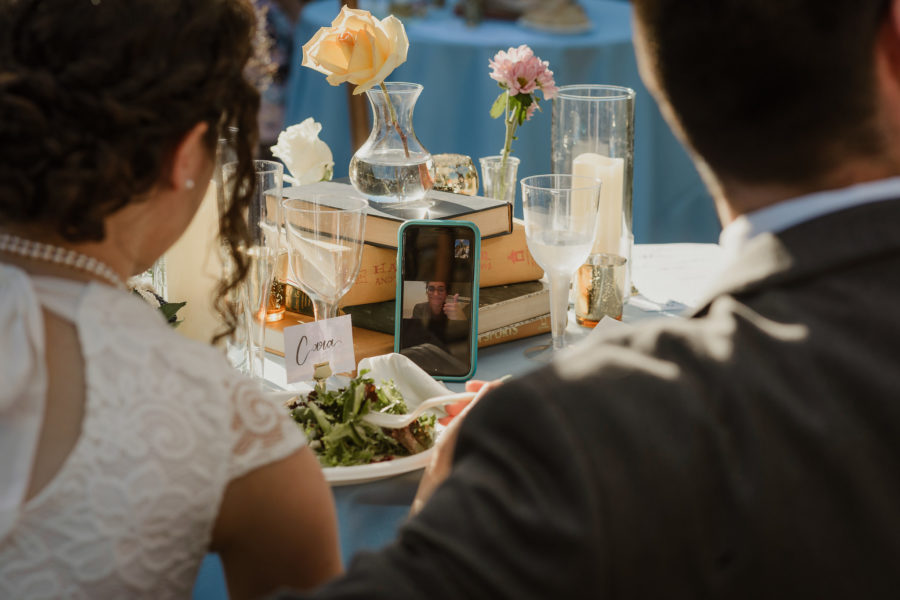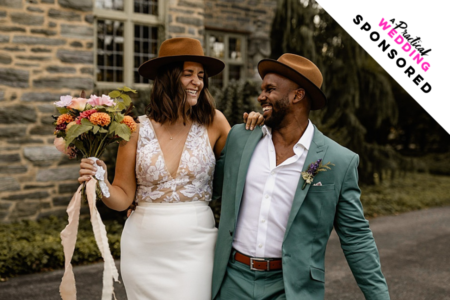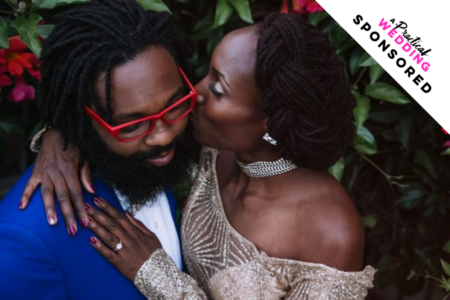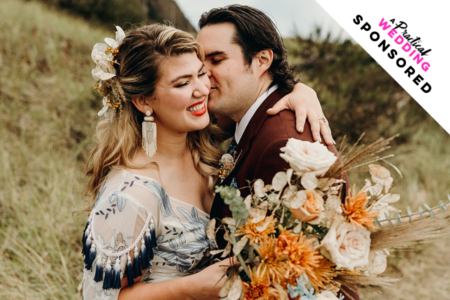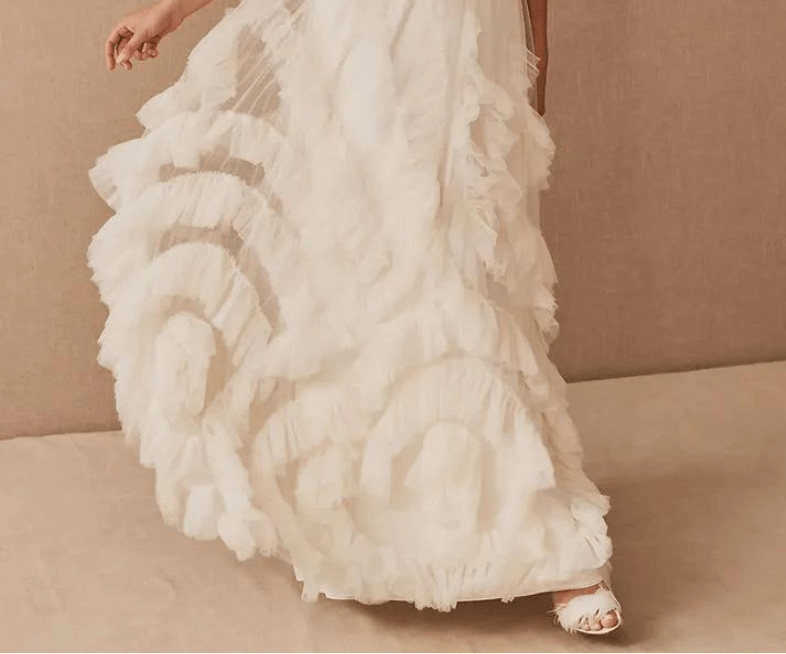I‘m a wedding coordinator, and I worked my first wedding of the pandemic last month.
Before I share what I learned, a few ground rules: The event abided by county and state regulations, had a COVID safety policy that required masks and social distancing, and was primarily outdoors (the reception was technically indoors but in a room where the floor-to-ceiling windows were open to the outside).
Now, as for what I learned.
Useful Lessons For Pandemic Weddings
1. The couple sets the tone
This has always been true but I particularly noticed it during this wedding: Wedding guests follow the lead of the couple. It’s unfair because it puts a lot of extra pressure on an already stressed out pair of people, but it’s vital to know. How you and your partner carry yourselves will tell the other guests how they should behave.
Are you two regularly keeping your distance from people? Are you two wearing your masks, even after dinner whaen it’s easy to forget to put them back on? Your guests will mirror your behavior. They will look to you and your partner to see how you two are acting and reflect that back. And the more guests you have, the more important it is to lead strong.
2. Short isn’t bad
Most weddings I work last for eight or nine hours. This includes five to six hours of reception time. This wedding, however, had a mere three hours between the ceremony and the end of the reception. That worked surprisingly well.
For one thing, most guests didn’t want to hang out. They happily attended the ceremony and even struck around to eat a little bit but a dance floor? General mingling? The social things we think about when we think “wedding”? Those things don’t feel very safe right now.
So keep it short. Your guests will thank you.
3. Nobody can hear you
I expected my mask to slightly muffle my voice. What I didn’t consider was what a muffled voice plus loud music would mean.
Time and again, I would say something only to have a vendor or wedding guest lean in—much closer than six feet—to hear what I had to say. On my personal risk assessment scale, this was a solid yellow, if the other person was also wearing a mask. But sometimes they were not, particularly if they were a wedding guest. This felt like a fire engine red situation. I don’t have a solution to this COVID quandary, but it feels very important to note.
4. Rules Get Broken
As strict as you might be–and you should be strict because this is a global pandemic—people are people. Even the ones who want to do their very best to keep others safe are going to forget, and that forgetting is only going to get more pronounced the longer the evening goes on and the more opportunities there are to remove a mask—i.e. food to eat, drinks to drink. That may well mean that you need to keep things extra short and eliminate temptations. Because you can set the rules, but it’s very hard to control people (particularly once they’ve had a drink.)
Does this feel unfair, given that you just want people to follow reasonable rules so you can enjoy a little bit of normalcy at your wedding? Yup. Feels unfair. But it’s going to feel much worse than unfair if there is an outbreak because people simply didn’t follow the rules you set. So you’ll want to consider what choices you want to make.
5. Livestreams aren’t really worth it (But Zoom Is Ok-ish)
A livestream, shown on YouTube, sounds good on paper. But in practice, it just wasn’t worth it. A mere 16 people of an estimated 60 tuned in. Those who did saw a spotty video feed that often cut out not because the vendor did a bad job but because, unless you hardwire into the internet, the wi-fi just isn’t going to be strong enough to support a steady video feed.
Worse yet: It turns out that YouTube (where most livestreams are shown) has a very sensitive radar for licensed music. That means anytime a song played at the wedding, the feed cut out unless the vendor muted the video. You can see how this could be a problem when, say, walking down the aisle or during a first dance. The people watching couldn’t hear what was going on because if we let them hear it, YouTube would ban the feed.
The most upsetting part, though, was how the livestream dictated the flow of the day. Multiple times, I had to hold up the natural progression of the wedding — i.e. let’s eat cake, let’s dance, let’s relax — in order to give the video team time to move and set-up the livestream equipment.
If a wedding is meant to be a day of joy, I can’t think of a faster way to pop that bubble of bliss than to be like “Um, sorry, I know you were just about to kiss your partner but can you wait until we get this browser properly loaded?”
Of course, there are ways to livestream that don’t hit the same snags that I mentioned above. I’ve got nothing against more homespun options — think Zoom, Google Meet, FaceTime. Also, as was the case for this wedding, the livestream was what the vendor offered to make up for the fact that they could no longer provide the photo booth that the couple had originally contracted them for pre-COVID. It was a way for the couple to still get their money’s worth.
Still, and I recognize this is a controversial opinion, if I were to do it all over again, I’d advise the couple to skip the livestream all together and, importantly, not demand their money back from the vendor. They’d lose that portion of their contract but gain a whole lot of sanity.
6. Signs help (kinda)
One of the many extra steps this couple took was to buy a bunch more signs.
There was a sign that said “Wear your mask. Keep your distance. Celebrate with us.” There were social distancing dots that read “Distance makes the heart grow fonder.” There were individual name tags on every chair at the ceremony and at the reception.
If it could have a label, it had it at this wedding.
That helped, for sure, until, of course, the social distancing dots got so dirty from being stepped on that you couldn’t read them, or until the guests had a few drinks and “Wear your mask” became a lot harder to remember even with the cute wooden sign on an easel.
I’m not saying don’t buy the signs. Buy them. Particularly the name tags. They are important. But there are limitations to how effective they’re going to be., and you need to get real about that up front.
7. Drive-thru receptions aren’t as Bad as they sound
This particular couple had to un-invite 60 people to the in-person part of their wedding. To help soften the blow, they invited those un-invited guests who lived locally to join them for a “drive-thru reception.”
This meant that the un-invited guests would hop in a car and drive by the reception, honking, cheering, and waving at the couple. Many stopped and rolled down their windows to talk—masks on—with the newlyweds who bought enough of the pre-packaged dessert to hand out to their drive-thru guests.
Perhaps this sounds silly to you. It did to me until I saw it in-person and you know what? It was actually really nice. And honestly, everyone seemed much more relaxed than at the in-person reception. I think this was because they were masked, distanced, and outside.
8. The best part happened when everybody left
I work weddings for a very simple reason: to regularly witness joy. The happy tears. The clasped hands. The goofy smiles. Those are the signs that the joy is here and that it is strong.
Unfortunately, COVID makes it much more difficult to access joy. That makes sense. We are all afraid right now. We are even more afraid when we are surrounded by strangers in an unfamiliar environment. Perhaps this is why the most joyful moment of the day happened after everybody left.
It was at the end of the evening when only a core group of people remained—the couple and their immediate loved ones. I don’t know what kind of bubble policy they all had with one another, but they were comfortable enough to be unmasked and touching.
I watched from my spot outside as the family danced. They were laughing and smiling and hugging. They radiated the joy that I consider synonymous with weddings but that I hadn’t seen for much of the day. Everyone was just too tense when there was a group of people in a room, sometimes with masks on but sometimes not.
Here Are The Pre-Wedding Conversations Worth Having
What does this mean for you and your partner? It means that before you have a wedding, you need to have a conversation. Why are we doing this right now? What is our motivation? How do we want to feel on our wedding day?
I’ve been preaching these questions for years but they have a new urgency in our current era. We cannot force old traditions on a new world. It just doesn’t work. Instead, we have to redefine what we mean when we say “wedding.” There is a good chance that the result will involve many, many fewer people than originally planned, perhaps just involving the group that you would dance with at the end of the night. It will most certainly involve prioritizing health and safety for everyone involved.
That’s OK, because the point of a wedding is to feel joy and there’s no guest count for that.

